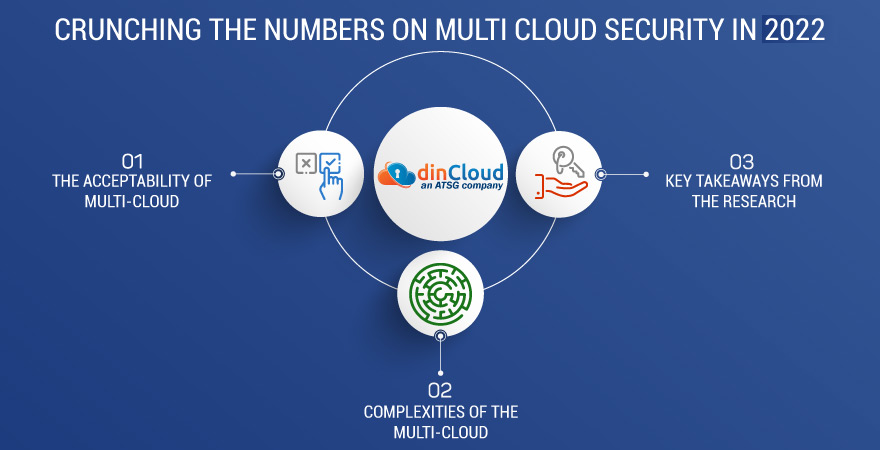Enterprises did not take long to realize the countless benefits that public cloud providers and solutions have to offer. However, in the overall bigger picture, organizations also want to keep their risks and vulnerabilities at a bare minimum.
The same holds true when it comes to cloud solutions. While enterprises are increasingly choosing cloud based solutions in place of on-premise infrastructures, some might feel they are putting “all their eggs in one basket”, when it comes to risk.

So, the solution to this issue comes in the form of multi-cloud infrastructures, which offer deploying enterprises an un-rivaled peace of mind, risk diversification, and the benefits inherent within cloud solutions.
A multi cloud strategy also provides deploying enterprises protection against the dreaded vendor lock-in, which can equally become a problem if an enterprise wholly and solely relies upon any single Cloud Service Provider (CSP).
In this post, we will be running a few numbers around multi cloud security that emerged from a survey conducted by “Valtix”, a U.S based company that specializes in multi cloud security solutions.
Related: Hyperautomation Retains a Spot in Gartner’s Top Tech Trends for 2022
The Acceptability of Multi-Cloud
Here are a few numbers from the survey, which point towards a rising acceptability of multi cloud infrastructures within the enterprise space.
- In the year 2022, an overwhelming 95% of the 200 surveyed enterprises will be making multi cloud their strategic priority.
- Another 96% of the respondents declared the security of their multi cloud environments as a top priority.
- However, only 54% of the respondents felt confident about the right tools and skillset to navigate multi cloud environments, as well as their security challenges.
- 76% of the enterprises believed they were not investing enough financial resources to streamline and secure multi cloud operations.
Complexities of the Multi-Cloud
While multi cloud environments offer a host of benefits, they also accompany security and administrative challenges. Here are some useful numbers on this:-
- The majority 51% of the respondent IT leaders were in fact resisting multi cloud adoption, due to the additional security complexities.
- Interestingly, 92% of the respondents still believed that multi cloud adoption will become a necessity for them in the near future.
- 82% of the respondents were of the opinion that multi cloud security was complex, and at times did slow down or disrupt normal operations.
Key Takeaways from the Research
Below are a few key takeaways from the research, specifically concerning multi cloud environments.
- A healthy 62% of the surveyed enterprises were being managed by the multi-cloud.
- 82% of the surveyed enterprises that were not on the multi-cloud yet had proper plans in place to complete the same within 2 years.
- Another 83% of the enterprises were planning to invest more in the security of the multi-cloud.
- Enterprises that took part in the survey wanted to ramp up their multi cloud security budgets by 47%, which is a sign of the potential within.
- Worryingly, 67% of the enterprises declared a lack of capacity of their IT personnel to navigate the challenges of multi cloud security.
- Only 48% of the respondents believed they had full visibility and control over their workloads, as well as processes deployed over the multi cloud.
- A thin 55% of the enterprises were fully confident regarding the cyber security controls they had in place for their respective multi cloud environments.
Related: How to Navigate Cloud Security Challenges in the Year 2022?
Conclusion
After crunching the above numbers, it is quite evident that multi cloud adoption is the way forward for enterprises that want to fully embrace the Cloud for their data, applications and workloads. However, security still remains a challenging area for them.
There is an increasing need for across the board coverage and visibility of multi cloud environments, purely from a cyber security and data privacy perspective. Given the complexities inherent in securing the multi cloud, automation will be key.
In addition to automating multi cloud security, enterprises will increasingly turn towards consolidation of their cyber security mechanisms under a single vendor. This approach will relieve enterprises of the complexities associated with such cloud environments.
Towards the end, the research report underscores the importance of bringing cloud native enterprise applications within the fold of multi cloud security. The level of interaction present day SaaS apps have with enterprise data and processes in unprecedented.
Are you finding multi cloud security challenging? If so, why not choose a reliable and trusted Cloud Service Provider (CSP) in the form of dinCloud, which has a wide array of solutions and services that are assorted under the same roof!


